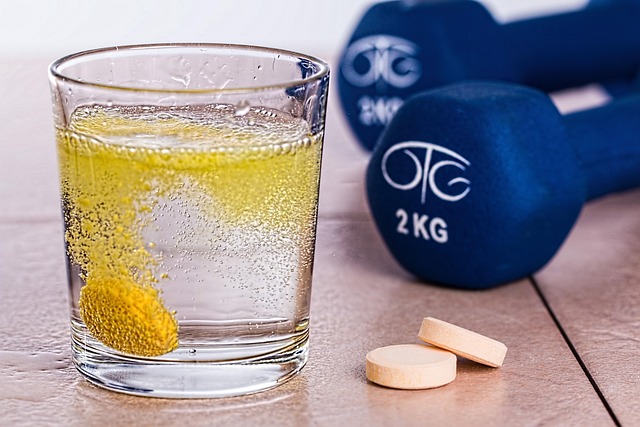Hydration and Electrolyte Guidance for Varying Climates
Hydration needs change with climate, activity, and dietary patterns. This article outlines practical electrolyte and fluid strategies for cool, temperate, and hot environments, integrating considerations for metabolism, macronutrients and micronutrients, digestion, and recovery to help readers plan meals and fluids across seasons.

Hydration requirements shift with temperature, humidity, and personal factors such as activity level and body composition. In cold or dry climates, insensible water loss through respiration increases; in hot, humid settings, sweat rates and electrolyte losses rise. Understanding how hydration interacts with metabolism, macronutrients, and recovery can improve digestion and overall wellbeing while supporting sustainable food and fluid choices.
This article is for informational purposes only and should not be considered medical advice. Please consult a qualified healthcare professional for personalized guidance and treatment.
How does climate affect hydration and metabolism?
Temperature and humidity alter the balance between fluid intake, sweat loss, and energy use. In heat, the body diverts blood to the skin and increases sweat to dissipate heat, raising the need for fluids and electrolytes; that process also affects metabolic rate modestly as the body works to cool itself. In cold climates, people may drink less despite ongoing water loss via respiration and core-to-periphery blood flow changes, which can subtly influence metabolism and energy requirements. Monitoring thirst, urine color, and weight changes after activity helps estimate losses and adjust hydration plans.
Which electrolytes support recovery and digestion?
Sodium, potassium, magnesium, and calcium are central electrolytes for fluid balance and muscle function. Sodium helps retain fluid and supports nerve signaling; potassium and magnesium assist muscle recovery and proper digestion by aiding smooth muscle function in the gut. For most people, balanced meals that include a variety of whole foods—such as legumes, dairy or fortified plant milks, nuts, seeds, fruits, and vegetables—provide baseline micronutrients. After prolonged sweating or intense exercise, targeted electrolyte replacement through drinks or foods can support recovery while minimizing gastrointestinal upset.
Do macronutrients and micronutrients affect guthealth?
Macronutrients—carbohydrates, protein, and fat—interact with micronutrients and fiber to shape digestion and guthealth. Carbohydrates provide readily available energy for activity and aid glycogen replenishment during recovery; protein supports tissue repair, and dietary fat helps absorb fat-soluble vitamins. Micronutrients and fiber from fruits, vegetables, and whole grains feed the gut microbiome and support digestive integrity. Maintaining appropriate portions and timing of meals around activity can reduce gastrointestinal discomfort and improve nutrient uptake, especially when traveling between climates.
How should mealtiming, portions, and protein adapt?
Mealtiming that aligns with activity and climate can aid hydration and recovery. In hot conditions, smaller, more frequent meals with moderate protein can be easier to digest and help maintain energy without excessive thermal load. Protein supports recovery—aim for balanced portions spread across meals to sustain muscle repair. In cooler climates, larger meals may be tolerable and can provide extra calories if metabolic rate rises. Adjust portions based on activity intensity, not just temperature, and include fluids with meals for digestion and satiety.
Can plantbased and carbohydrates support hydration needs?
Plantbased foods often have high water content and can contribute meaningfully to daily hydration; fruits, vegetables, and soups provide both fluids and carbohydrates useful for refueling. Carbohydrates also promote glycogen restoration after exertion and can be paired with electrolytes to speed recovery. When relying on plantbased sources for electrolytes, include a variety of legumes, leafy greens, nuts, seeds, and whole grains to cover potassium, magnesium, and some sodium (or pair with modestly salted foods if sodium needs rise with sweat losses).
What vitamins, electrolytes, and sustainability tips matter?
Vitamins such as vitamin D and B-complex play roles in energy metabolism and should be considered in dietary planning, particularly when seasons affect sun exposure or food variety. Sustainability considerations—choosing minimally processed electrolyte sources and plant-forward meals—can reduce environmental impact while meeting micronutrient needs. Practical tips include preparing simple, portable electrolyte mixes from mineral-rich foods, prioritizing local produce for micronutrient variety, and minimizing single-use plastic by using refillable bottles when carrying fluids in different climates.
Conclusion
Adapting hydration and electrolyte strategies to local climate, activity level, and dietary patterns helps maintain metabolism, support recovery, and promote healthy digestion. Emphasize a mix of whole foods and mindful fluid intake, monitor individual responses such as thirst and urine color, and tailor mealtiming and portions to match exertion and environmental demands. For specific medical conditions or persistent symptoms, seek personalized advice from a qualified healthcare professional.





